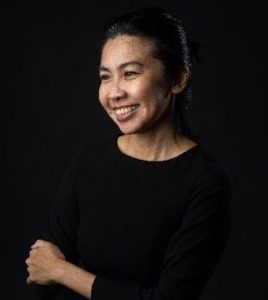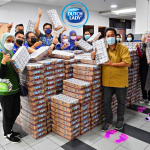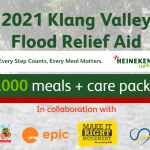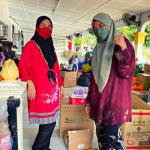by Dr. Sucharita Srirangam & Dr Veronica Ng Foong Peng, Taylor’s University
Over the weekend, floods resulting from the torrential downpour in many Peninsular Malaysia states have caused significant economic and social disruptions, with businesses closing down and over 60,000 residents displaced in more than 400 evacuation centers around the country.
The Klang Valley saw what has been described as a one-in-a-hundred-year heavy rainfall since 17 December, 2021 due to a tropical depression, causing heavy downpours of over three days straight and a quick rise in water level contributing to high flood risk.
Despite flooding being a yearly occurrence in the country, especially in the East Coast region, Malaysia was severely underprepared in mitigating the risk of flash floods in major states and cities, thus exposing a reality of extreme climate change and inadequate sustainable smart city planning.
Environmentalist Renard Siew suggests that the recent floods in Selangor, Negeri Sembilan, Kelantan, Pahang, Melaka, and Terengganu are clear examples of unpredictable weather because of high carbon emission.
As a result, climate change will only likely increase the number of occurrences in flood risk, especially during the monsoon seasons.
Flood risk is defined as essentially a product of flood hazard and vulnerability. Monsoonal and convectional rainfall, flat topography on the coast, heavy siltation of the rivers, and human activities have all contributed to high flood risk. Risk increases because flood characteristics change due to rapid urbanisation of catchments, deforestation, and other environmentally damaging human land uses.
Adding to the already prevailing COVID-19 pandemic, the flood has exposed vulnerable communities to higher risk. The current social issues are due to the lack of aspects of disaster management such as awareness building and preparedness; environmental issues being soil erosion and landslides causing even more damage.
For Malaysia to be resilient in the future, architecture and urban design will have to take the bifocal approach of environmentally sensitive design and Community Based Disaster Risk Management (CBDRM), attributing with space and people, respectively.
Environmentally sensitive solutions involve integrated design with urban ecology and landscape, disaster-prone land-use strategies, the street network for escape routes based on flood elevations, and strategic urban locations of rescue points.
Such sensitive solutions will mitigate the risk to a large extent avoiding one of the fundamental sources of the issue, the misfit of manmade and natural settings such as environmentally damaging human land uses and vice-versa.
On the other hand, to achieve safety of lives, the CBDRM approach aims to solve the problems of disintegrated platforms of helplines of pre-, during- and post-flood, community’s unpreparedness and mitigation to flood, rescue and responses during a flood, and socio-economic and psychological imbalances in the post-flood phase to recuperate. This approach will help the communities to be well-informed, resilient, and prepared and hence ensuring safety.
The literature on Disaster Risk Reduction (DRR) widely has three key recommendations:
Firstly, collaborative research with interdisciplinary involvement to create an effective model involved in the integration of science and technology to build capacities of DRR before the disaster.
Secondly, the role of the community and social capital is the key for DRR focusing on the complexities (on physical, social, economic, institutional and natural dimensions) of urban communities to perform self-help during disasters.
Lastly, there is an emerging need for using IoT and Smart-city initiatives which are Community Based Disaster Risk Management (CBDRM) methods, such as hazard mapping, safe schools and hospitals, assessment and index approach for vulnerability, resilience, and sustainability, crowdsourcing, post-disaster needs assessment, mobile payment, indigenous DRR technology.
In summary, there is a necessity for an integrated approach that combines risks and actions for pre-, during- and post-disaster phases from the community’s perspective. The project at Taylor’s University, funded by the FRGS-2021, focuses on integrating the smart city into CBDRM. It will aid in a model of the smart dashboard that will empower the community for DRR and risk management.
About the Authors:


Image Source: Reuters
MARKETING Magazine is not responsible for the content of external sites.









